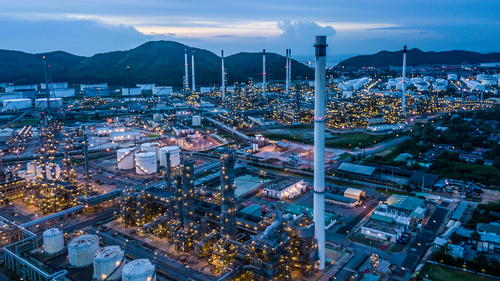
Natural gas has surpassed coal as the largest source of power generation in the United States, but the industry faces challenges, according to a report by FTI Consulting.
Natural gas accounted for 38 percent of the fuel mix in 2019 and several new liquefied natural gas (LNG) export facilities were underway. The United States will be the largest LNG exporter by 2030, according to some analysts’ forecasts.
FTI highlights many of the industry’s several challenges.
The federal Jones Act prohibits American LNG from moving between American ports on foreign-flagged ships, making access to domestically produced natural gas more difficult.
Natural-gas prices in the Northeast are among the highest in the world because of inadequate pipeline infrastructure.
Opponents of natural gas have successfully blocked or delayed crucial natural-gas pipelines, especially on the East Coast. This has resulted in the cancellation of projects.
“Opposition to the PennEast pipeline rose all the way to the Supreme Court,” FTI said. “After a lengthy legal fight, the $8 billion Atlantic Coast Pipeline was recently canceled as opponents committed to near-endless delay tactics. And the developer of the now-canceled Constitution Pipeline has announced it will cancel yet another project local utilities say is critical for meeting demand in New York City and Long Island. The increased delays and cancellations have gotten so severe that the New York Times recently ran a story entitled, “Is This the End of Oil and Gas Pipelines?” The answer to that question is “no,” but the mounting roadblocks to energy infrastructure are raising costs and forcing suppliers to rethink how to deliver fuel to market.”
Markets in the Southeast and along the East Coast in particular could face severe energy shortages without new infrastructure, FTI said. Oil producing regions also need additional infrastructure for transporting fuel to market.
It is forecasted that natural-gas demand will grow to 18 percent by 2050. The lack of pipelines could mean the industry will be forced to find alternative transportation options.
One of these options is using rail lines. The Pipeline and Hazardous Materials Safety Administration (PHMSA) says rail is a proven and well-established infrastructure network.
The PHMSA said in 2019 that LNG has been transported by rail without any accidents and that the transportation method is in demand for shipping LNG.
PHMSA and the U.S. Department of Transportation, in consultation with the Federal Railroad Administration, issued a final rule in June authorizing the transportation of LNG by rail. In the rule, new safety requirements were enacted.
The rule, U.S. Transportation Secretary Elaine Chao said, “carefully lays out key operational safeguards to provide for the safe transportation of LNG by rail to more parts of the country where this energy source is needed.”
Before the rule, a special permit was required to transport LNG by rail. Only three permits were granted.
One of the special permits allowed LNG to be transported from Pennsylvania to New Jersey.
Railroads transporting LNG vial rail will use the Rail Corridor Risk Management System. The system allows railroads to select the best routes based on safety and security.
The U.S. House Committee on Transportation and Infrastructure introduced legislation in June regarding the issuing of permits to transport LNG via rail. The bill has the potential to hamper the modernization of railroad infrastructure and make it more difficult for the industry to adapt in the future, the Association of American Railroads said.
FTI recommends a strategic plan that identifies where new infrastructure is needed and communicates this with elected officials, regulators, and the public. The plan would ensure new projects avoid delays and other challenges.
The plan would have four purposes, according to FTI.
It would ensure elected and nonelected local officials hear about the planning process for a proposed project before it is announced by the media.
It would create relationships with the media, creating open engagement with the community and increasing industry transparency.
It would use social and digital media as part of the industry’s communications strategy. A website could be used to distribute information, clarify misinformation or other allegations, create a dialogue with the community and answer and address questions and concerns.
Finally, it would create a community advisory committee that would give local stakeholders the opportunity to interact with developers and provide input into how a project should be developed.
Alternative transportation options will be necessary to connect natural gas from the Marcellus Shale region to the East Coast if bottlenecks continue in the Northeast, FTI said.
The Washington, D.C., based firm has offices in Philadelphia, Pittsburgh and Wayne.